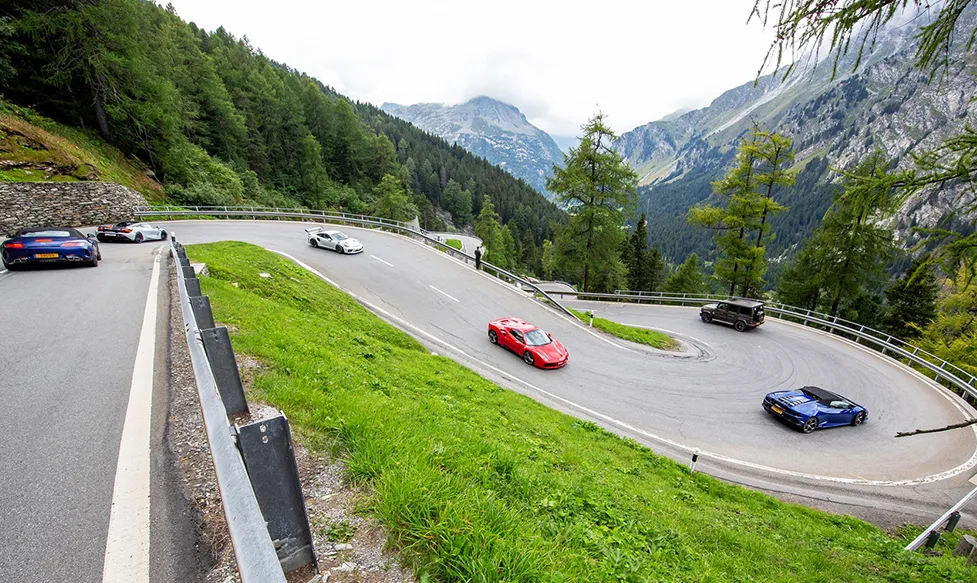Essential Tips for Driving in Switzerland: From Road Signs to Parking Etiquette

Switzerland is a country renowned for its stunning landscapes, from the snow-capped Alps to its serene lakes and charming villages. As a traveler, driving in Switzerland provides a unique opportunity to explore the country’s natural beauty at your own pace. However, before you hit the road, it’s important to familiarize yourself with the local driving rules, road signs, and parking etiquette. This guide will provide essential tips to ensure a smooth and enjoyable driving experience in Switzerland.
Understanding the Basics of Driving in Switzerland
Before embarking on your Swiss road trip, it’s essential to know the fundamental driving laws and regulations. One of the first questions any traveler has is what side of the road do you drive on in Switzerland. Switzerland follows the right-hand side of the road, so drivers from countries with left-hand driving should pay close attention when they first arrive.
Switzerland is known for its efficient and well-maintained road network, which includes highways, mountain roads, and rural lanes. While driving is generally straightforward, there are a few key aspects of Swiss driving you should be aware of to avoid surprises on the road.
Road Signs and Traffic Signals
Swiss road signs are generally easy to understand and follow. Most of them follow the international conventions, but it’s always a good idea to familiarize yourself with the specific signs you might encounter.
- Speed Limit Signs: Switzerland has a strict system for speed limits. You’ll often see circular signs indicating the maximum speed allowed. The national speed limit in Switzerland is typically 50 km/h (31 mph) in urban areas, 80 km/h (50 mph) on rural roads, and 120 km/h (75 mph) on highways. Be sure to watch for signs that may indicate changes in speed limits, especially near construction zones, schools, or in mountainous areas.
- Priority Signs: Some intersections will have priority signs that indicate which direction has the right of way. A triangle with the point facing down means the vehicles on the intersecting road must yield. If you see a sign with a horizontal line through it, it means you have the right of way.
- Warning Signs: Switzerland’s mountainous terrain means you’ll encounter plenty of warning signs indicating sharp curves, steep inclines, or potentially slippery roads. Always exercise caution when driving in these areas.
Mountain Roads and Alpine Driving
Switzerland is home to some of Europe’s most beautiful and challenging mountain roads. If you plan to drive through the Swiss Alps or other mountainous areas, it’s important to be prepared.
- Road Conditions: In winter, many of Switzerland’s mountain roads are covered in snow and ice, making driving more challenging. Ensure that your car is equipped with winter tires and snow chains if necessary. Even in summer, roads at higher altitudes can be narrow and winding, requiring extra attention when navigating.
- Altitude and Weather: The weather in the mountains can change quickly. Even if you start your drive in sunny conditions, snow or fog may appear unexpectedly at higher elevations. Always check weather forecasts and road conditions before setting out.
- Tunnels: Switzerland is known for its long tunnels, particularly through mountain passes. When driving through tunnels, ensure your headlights are on, and always follow the speed limit and lane instructions. Keep a safe distance from the vehicle in front of you, as visibility can be reduced.
Parking Etiquette in Switzerland
Parking in Switzerland can be both straightforward and tricky, depending on where you are. Here are some essential tips to help you navigate parking in Swiss cities and rural areas.
- Urban Parking: In cities like Zurich, Geneva, and Lucerne, finding parking can be challenging. Most urban areas require parking tickets, which can be purchased from parking meters or automated machines. Always check the signs to make sure you’re parking in a designated area and that you’re paying for the appropriate time limit.
- Blue Zones: In many towns and cities, you’ll find blue zone areas where you can park, but only for a limited time. These zones require a parking disc, which you set to indicate the time of your arrival. You can get a parking disc from local shops or gas stations.
- Private Parking: If you’re staying in a hotel or renting a private apartment, inquire about parking availability before you arrive. Many Swiss hotels offer parking, but it may come with a fee. In some rural areas, parking can be easier to find, but always check for any local restrictions.
- No Parking Zones: Always be on the lookout for no parking signs, which are commonly indicated by red circles with a diagonal line through them. Parking in these areas can result in fines or your car being towed.
Important Driving Laws to Follow
In addition to road signs and parking regulations, there are a few important driving laws that you should follow while in Switzerland:
- Seatbelts: It is mandatory for all passengers in a vehicle to wear seatbelts, regardless of whether they are in the front or back seats.
- Alcohol Limits: The legal blood alcohol limit in Switzerland is 0.05%. If you are caught driving with a higher alcohol concentration, you can face heavy fines, suspension of your driving license, or even imprisonment.
- Mobile Phones: It is illegal to use a mobile phone while driving unless you have a hands-free system. Using a phone while driving can result in a fine and penalty points on your driving record.
- Headlights: It is compulsory to use headlights at all times when driving through tunnels. In some areas, you may also need to use your headlights when driving in poor visibility conditions, such as fog or heavy rain.
Rural Driving and Countryside Routes
Driving through Switzerland’s rural areas and countryside is one of the highlights of any trip. Whether you’re exploring the picturesque villages of the Swiss Riviera or driving through the rolling hills of the Engadine Valley, the country’s scenic routes offer breathtaking views and charming stops.
While these roads are generally well-maintained, they can sometimes be narrow, especially in rural mountain areas. Always be cautious of cyclists, pedestrians, and local farmers moving about their land. Some roads may also have gates or barriers that close at certain times, especially near agricultural areas.
If you are traveling through remote areas, make sure you have sufficient fuel, as gas stations can be few and far between. It’s also advisable to have a map or GPS system in case you get lost in less-populated regions.
Conclusion
Driving in Switzerland offers an incredible opportunity to experience the country’s beauty and charm. By understanding the rules of the road, recognizing the important road signs, and practicing good parking etiquette, you can navigate Switzerland’s roads with ease. Remember to always check what side of the road does Switzerland drive on, follow the national speed limits, and stay alert when driving through mountainous regions. With careful planning and an awareness of local laws, your Swiss driving adventure will be safe, enjoyable, and unforgettable.






